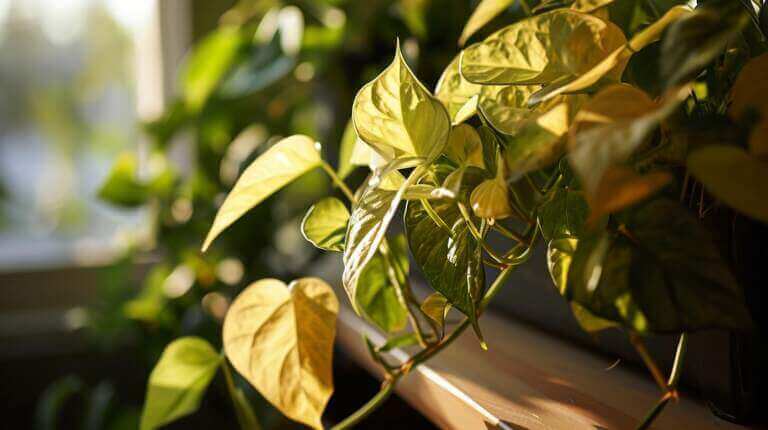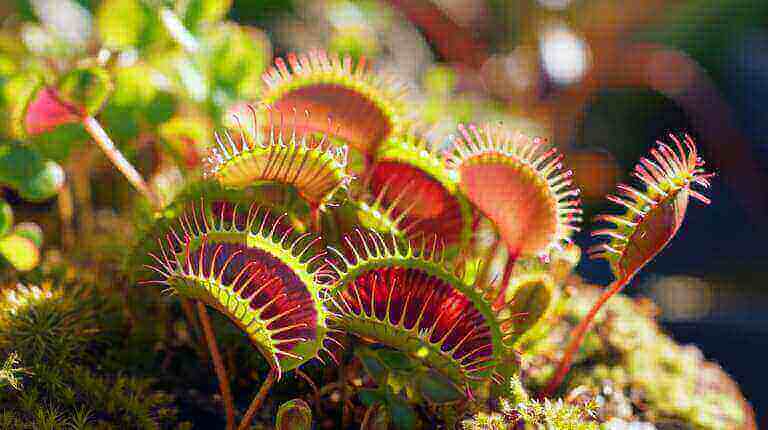Grow And Care For Parlor Palm Tree Successfully Outdoors In Frost Free Climates
Parlor palms, also known as Chamaedorea elegans, are not just limited to being houseplants; they can thrive in the great outdoors too! Native to Mexico and Guatemala, parlor palms are known for their delicate foliage and resilience. So, if you’re lucky enough to live in a sub-tropical zone or any frost-free region, you can enjoy the beauty and tropical charm of parlor palms in your outdoor garden.
But wait, before you rush to buy your parlor palm, let me guide you through the essential steps and tips for their proper care and cultivation. From choosing the right location to providing the perfect growing conditions, we’ll cover it all.
Key Takeaways:
- Parlor palms can be grown outdoors in frost-free climates.
- They prefer dappled lighting and high moisture levels.
- Choose a suitable location with partial shade or northern/eastern exposure.
- Regular watering and well-drained soil are essential for their growth.
- Proper fertilization and pruning contribute to their optimal growth.
Best Growing Conditions for Parlor Palm Tree Outdoors
When it comes to growing parlor palms outdoors, providing the right conditions is crucial for their success. These tropical plants thrive in frost-free climates, typically in USDA zones 10 to 10b. Here are the key growing conditions to keep in mind:
- Soil: Parlor palms are adaptable to a variety of soil types but require well-drained soil. Amend the soil with organic material, such as compost or peat moss, to improve its drainage capabilities.
- Light: These palms prefer indirect light or dappled shade. Avoid placing them in direct sunlight, as it can cause their delicate leaves to burn.
- Temperature: Parlor palms thrive in moderate temperatures between 65°F and 75°F. While they can tolerate lower temperatures, they are not frost-resistant and should be protected from freezing conditions.
- Watering: Regular watering is essential to maintain the moisture levels that parlor palms prefer. Keep the soil evenly moist but not waterlogged, as excessive moisture can lead to root rot.
- Fertilization: Fertilize parlor palms with a balanced feed in early spring and monthly until fall. Use a fertilizer with a ratio of 10-10-10 or a higher nitrogen ratio, such as 10-6-4, to promote healthy growth.
Table: Growing Conditions for Parlor Palms Outdoors
| Growing Condition | Optimal Conditions |
|---|---|
| Soil | Well-drained soil amended with organic material |
| Light | Indirect light or dappled shade |
| Temperature | Moderate temperatures between 65°F and 75°F |
| Watering | Regular watering to maintain moisture levels |
| Fertilization | Balanced feed with a ratio of 10-10-10 or higher nitrogen ratio |
Planting and Caring for Neanthe Bella Parlor Palm Plant Outdoors
Planting parlor palms outdoors requires careful consideration of the right container and suitable soil. A peaty soil-based potting mix works well for container plants, ensuring proper drainage. When choosing a location, it’s important to find a spot with northern or eastern exposure to avoid direct sunlight. Direct sunlight can lead to foliage burn and damage the palm. Regular watering is necessary to keep the soil moist but not waterlogged. Outdoor parlor palms may also require misting in arid regions to maintain humidity levels.
To care for parlor palms outdoors, it’s essential to be vigilant against common pests such as mites, nematodes, and scales. Small infestations can be manually removed, while larger infestations may require the use of horticultural soap spray. Proper drainage is crucial to prevent overwatering and root rot. When repotting, it’s important to handle the palm with care and test the soil for pH levels before fertilizing.
Summary:
- Choose a suitable container with well-drained soil for planting parlor palms outdoors.
- Place the palm in a location with northern or eastern exposure to avoid direct sunlight.
- Regularly water the plant to keep the soil moist, but not waterlogged.
- Consider misting the palm in arid regions to maintain humidity levels.
- Monitor for pests and treat them accordingly to prevent damage to the palm.
- Ensure proper drainage to prevent overwatering and root rot.
- Handle the palm with care during repotting and test the soil’s pH levels before fertilizing.
| Planting Parlor Palms Outdoors | Caring for Parlor Palms Outdoors |
|---|---|
| Choose a suitable container with well-drained soil. | Regularly water to keep soil moist but not waterlogged. |
| Place in a location with northern or eastern exposure. | Mist in arid regions to maintain humidity levels. |
| Avoid direct sunlight to prevent foliage burn. | Monitor for pests and treat accordingly. |
| Ensure proper drainage to prevent overwatering and root rot. | |
| Handle with care during repotting and test soil pH levels before fertilizing. |
Fertilizing Parlor Palms for Optimal Growth
When it comes to fertilizing parlor palms for optimal growth, it’s important to provide the right nutrients in the right amounts. Nitrogen is crucial for promoting healthy foliage, while phosphorus and potassium support overall plant growth and development. To ensure your parlor palms receive the necessary nutrients, a balanced fertilizer with a ratio of 10-10-10 or a higher nitrogen ratio, such as 10-6-4, is recommended.
When applying fertilizer to your parlor palms, you have a choice between granular and liquid-based fertilizers. Granular fertilizers can be sprinkled around the base of the palm and lightly watered, allowing the nutrients to slowly release into the soil. On the other hand, liquid fertilizers can be mixed with water and applied directly to the soil. Regardless of the type of fertilizer you choose, it’s important to follow the package instructions for application rates and frequency.
While proper fertilization is essential for the optimal growth of parlor palms, it’s important to avoid overfertilization. Excessive amounts of fertilizer can lead to leaf burn, stunted growth, and weak new growth. To prevent these issues, it’s recommended to fertilize parlor palms during late winter or early spring and early fall, avoiding fertilization during the dormant period in winter and the hot summer months.
| Fertilizer Type | Application Method | Frequency |
|---|---|---|
| Granular | Sprinkle around the base of the palm | Every 2-3 months |
| Liquid | Mix with water and apply around the base of the palm | Every 4-6 weeks |
Quick Tips for Fertilizing Parlor Palms:
- Choose a balanced fertilizer with the right nutrient ratios.
- Follow the package instructions for application rates and frequency.
- Apply granular fertilizer around the base of the palm and water lightly.
- Mix liquid fertilizer with water and apply around the base of the palm.
- Avoid overfertilization to prevent leaf burn and stunted growth.
- Fertilize during late winter or early spring and early fall.
Maintaining Parlor Palms Outdoors
When it comes to maintaining parlor palms outdoors, there are a few key factors to consider to ensure their health and vitality. First and foremost, it’s important to protect these delicate plants from extreme temperatures and drafts. Parlor palms thrive in average room temperatures between 65°F and 80°F, so it’s essential to provide them with a suitable environment. If the temperature drops below 60°F, the palm may suffer from cold damage, resulting in yellowing leaves and browning leaf tips.
Another crucial aspect of maintaining parlor palms outdoors is providing adequate humidity. These plants originate from rainforests, so they require higher humidity levels to thrive. Dry leaf margins and brown tips can be an indication that the humidity levels are too low. To increase humidity, you can mist the palm with water or place a humidifier nearby. It’s also helpful to group plants together, as they create a microclimate that retains moisture.
Regular watering is crucial for the health of outdoor parlor palms. These plants prefer moist but not waterlogged soil. It’s important to monitor the soil moisture levels and adjust watering accordingly. Overwatering can lead to root rot, while underwatering can cause the leaves to yellow and dry out. The frequency of watering depends on factors such as the temperature, humidity, and soil drainage. It’s advisable to water when the top inch of soil feels dry to the touch.
| Key Points for Maintaining Parlor Palms Outdoors |
|---|
| Protect from extreme temperatures and drafts |
| Maintain average room temperatures between 65°F and 80°F |
| Provide higher humidity levels |
| Monitor soil moisture and water accordingly |
Propagation and Common Problems of Parlor Palms Outdoors
When it comes to propagating parlor palms outdoors, the most common method is through seeds. Professional growers usually use this technique to ensure successful propagation. While it is possible to divide a clump into smaller parts, it is not recommended as it can cause stress to the plant. Unfortunately, stem or leaf cutting propagation is not effective for parlor palms. Therefore, if you want to expand your outdoor parlor palm collection, it is best to purchase new plants or obtain seeds from reputable sources.
Like any plant, parlor palms can encounter common problems when grown outdoors. One of the most common issues is browning leaf tips, which is often caused by excessive sunlight or underwatering. To prevent this, make sure your parlor palms are situated in an area with indirect sunlight and provide adequate water to keep the soil consistently moist. Another problem that may arise is yellowing leaves, which can also be a result of underwatering. Monitoring soil moisture levels and adjusting watering accordingly can help prevent this issue.
| Problem | Cause | Solution |
|---|---|---|
| Browning leaf tips | Excessive sunlight, underwatering | Move to a location with indirect sunlight, ensure consistent soil moisture |
| Yellowing leaves | Underwatering | Monitor and adjust watering to keep soil consistently moist |
| Root rot | Overwatering, waterlogged soil | Ensure proper drainage, inspect roots for rot, prune affected roots, repot in fresh soil |
| Stem cankers | Physical damage, bacterial or fungal infection | Prune affected areas, keep wounds clean and dry, apply fungicide or bactericide |
Types Of Palm Trees for Outdoor Cultivation
When it comes to outdoor cultivation of parlor palms, there are several varieties to choose from. Each variety has its own unique characteristics, adding ornamental appeal to outdoor gardens. Let’s take a closer look at some popular parlor palm varieties suitable for outdoor cultivation:
1. Chamaedorea elegans
This is the most common variety of parlor palm, native to Mexico and Central America. It features a clumping growth habit and light-textured foliage. Chamaedorea elegans is a great choice for those looking to add a touch of greenery to their outdoor landscape.
2. Chamaedorea erumpens
If you prefer a parlor palm with larger and more fan-like leaves, Chamaedorea erumpens is an excellent option. This variety adds a unique and tropical look to any outdoor garden or patio area.
3. Chamaedorea hooperiana
For those who want a parlor palm that resembles a kentia palm, Chamaedorea hooperiana is the perfect choice. With its large palm-shaped leaves, this variety adds a touch of elegance and sophistication to any outdoor setting.
| Variety | Characteristics |
|---|---|
| Chamaedorea elegans | Clumping growth habit, light-textured foliage |
| Chamaedorea erumpens | Larger, fan-like leaves |
| Chamaedorea hooperiana | Resembles kentia palm, large palm-shaped leaves |
These parlor palm varieties are generally available for purchase rather than attempting propagation from seeds or other methods. Consider the specific characteristics of each variety and choose the one that best suits your outdoor garden or patio space. With their lush foliage and tropical charm, parlor palms are sure to enhance the beauty and ambiance of your outdoor oasis.
FAQ
Can parlor palms be grown outdoors?
Yes, parlor palms can be grown outdoors in frost-free climates.
How tall can parlor palms grow?
Parlor palms can grow up to 5-8 feet in height.
What kind of lighting do parlor palms prefer?
Parlor palms prefer dappled lighting or partial shade to avoid direct sunlight.
How often do parlor palms need to be watered?
Parlor palms require regular watering to maintain proper moisture levels.
What is the best fertilizer to use for parlor palms?
A balanced fertilizer with a ratio of 10-10-10 or higher nitrogen ratio works well for parlor palms.
How do I maintain humidity levels for outdoor parlor palms?
Misting the palm or mulching around the root zone can help maintain humidity levels.
How do I prevent pests from infesting my outdoor parlor palms?
Regularly checking for pests such as aphids, mealy bugs, scale, and whitefly is important. Small infestations can be manually removed, while larger infestations may require horticultural soap spray.
Can parlor palms be propagated from seeds?
Yes, parlor palms can be propagated from seeds, but stem or leaf cutting propagation is not effective.
What are some common problems with outdoor parlor palms?
Common problems include browning leaf tips, yellowing leaves, root rot, and stem cankers.
What are some popular varieties of parlor palms for outdoor cultivation?
Some popular varieties include Chamaedorea elegans, Chamaedorea erumpens, and Chamaedorea hooperiana.







